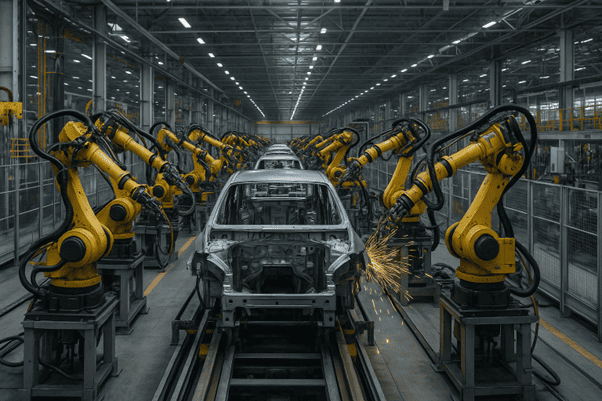Enterprise Architecture Trends in Automotive Digital Transformation

The automotive industry is undergoing a profound digital transformation, driven by trends like electric mobility, autonomous driving, connected services, and shifting consumer expectations. In this context, Enterprise Architecture (EA) has become critical for aligning technology initiatives with business strategy and enabling this transformation at scale.
Software-Defined Vehicles (SDV) and E/E Architecture Evolution: Automakers are re-architecting vehicles around software. The electrical/electronic (E/E) architecture of cars is shifting from many fragmented control units toward centralized or zonal architectures. McKinsey notes that software and the underlying E/E architecture have become “the core enabler for key automotive innovations (autonomous, connected, electric, shared)”. We can imagine this trend as declarative programming paradigm, where one designs entire vehicle in software, and the entire car then gets blueprinted as json. This is only possible due to the interconnectivity of spare parts database, IoT factories, and new design softwares.
In Europe, for example, next-generation zonal E/E designs are expected to feature in a large share of new vehicles by 2035, allowing secure and efficient remote updates and new digital services. This SDV trend means enterprise architects must integrate vehicle software platforms with off-board IT systems (cloud services, IoT platforms) to deliver seamless features and updates.
Data-Centric Digital Platforms: Leading consultancies highlight the need for data-driven architecture to support new services and analytics. BCG advocates a “data and digital platforms (DDP)”, which essentially separates data from legacy transaction systems (like ERP/CRM), and uses APIs and cloud infrastructure for agility.
By liberating data from silos and leveraging cloud and AI, automotive firms can deliver new digital services in weeks rather than months. In practice, this means building enterprise data lakes, integration layers, and APIs that allow vehicle data, customer data, and operational data to flow into new applications (from mobile apps to AI-driven services) without needing to replace core systems upfront.
Each of these trends reflects a common goal: enabling speed, flexibility, and innovation while maintaining coherence in a complex ecosystem of automotive IT and vehicle systems.
Oldřich Příklenk
foto: https://chatgpt.com/

Prague office3rd floor, Drtinova 467/2a,
Prague 5, 150 00,
Czech Republic
